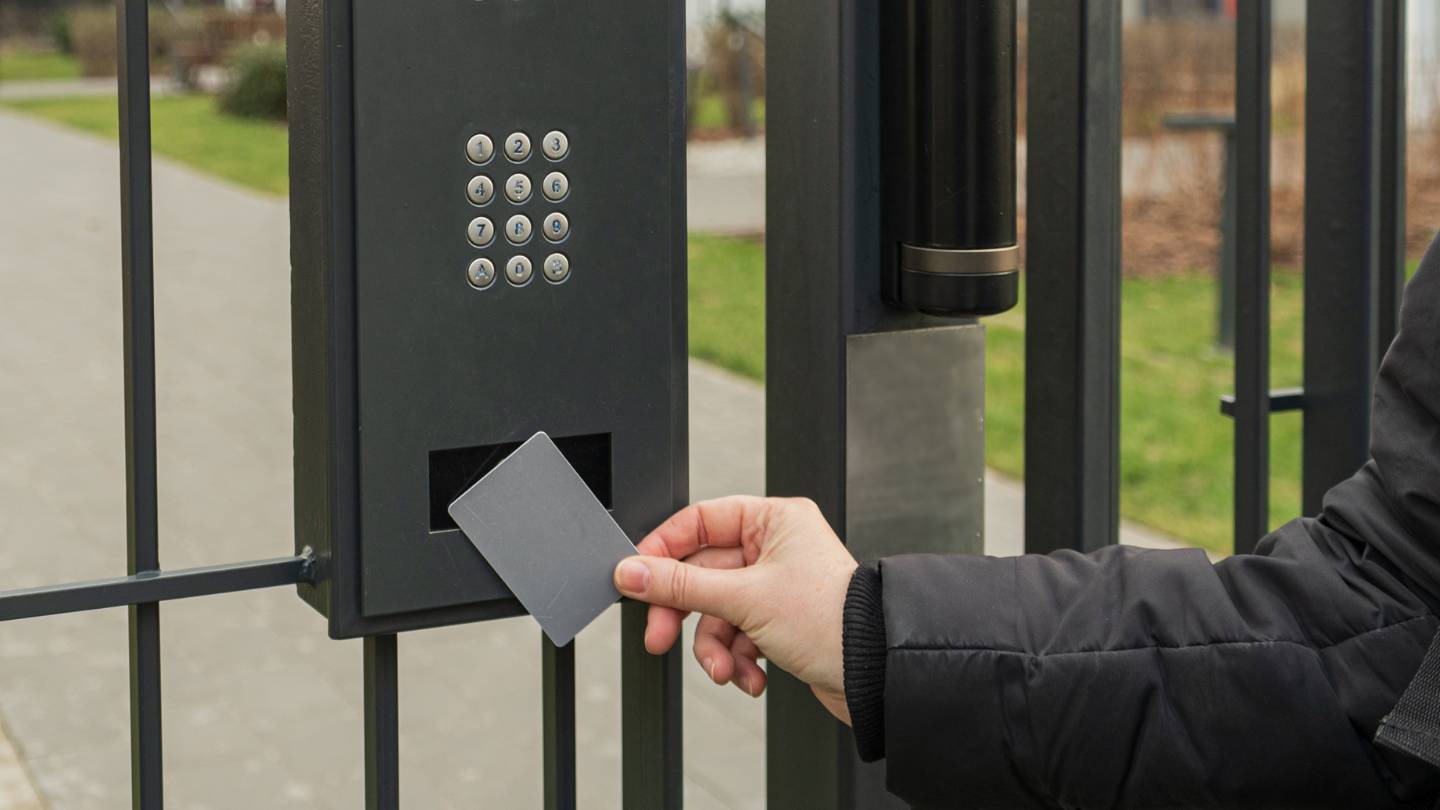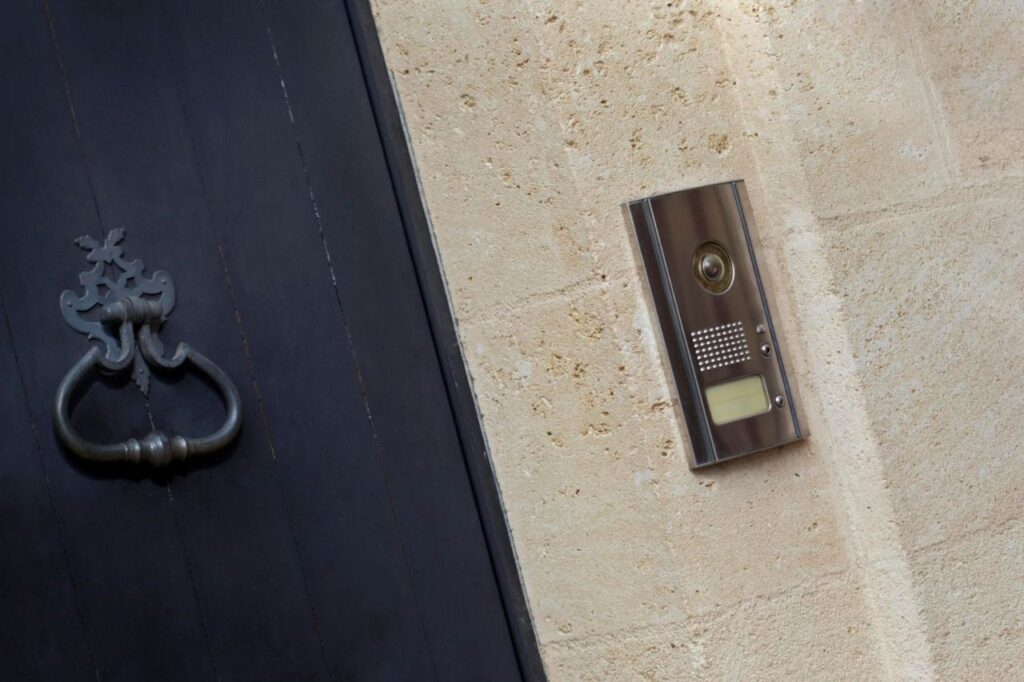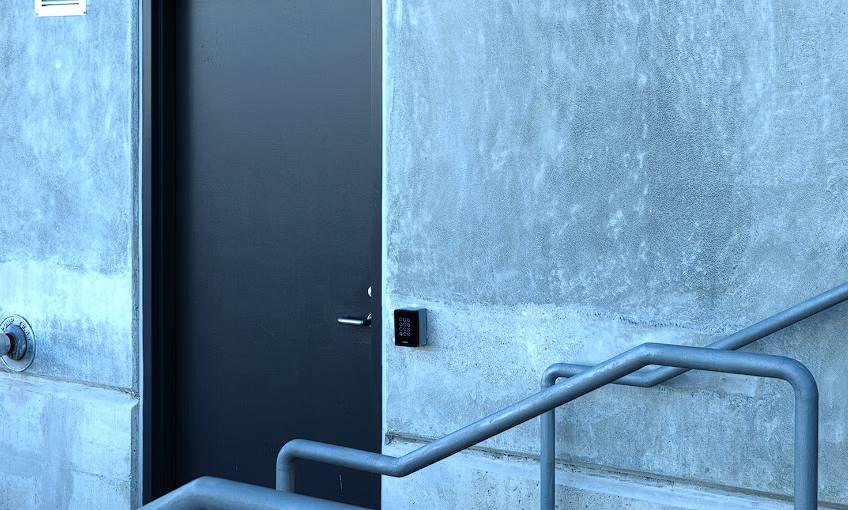In today's fast-expanding retail market, protecting the security of both merchandise and clients is important. Access control systems bolstered this defence, offering a holistic strategy for safeguarding retail settings.
From preventing unlawful entry to monitoring employee access and boosting overall operational efficiency, these technologies play a key role in ensuring a secure and controlled environment.
The issue of "How Do Access Control Systems Contribute To Retail Security?" stands at the centre of this discourse, encompassing the fundamental investigation into the efficacy and influence of these technical solutions.
Access control systems empower shops to restrict entrance points, eliminate theft threats, and improve resource allocation by seamlessly integrating modern authentication techniques, such as biometrics and keycards.
This introductory examination sets the groundwork for a deeper dive into the intricate methods via which access control systems bolster the security infrastructure of the current retail landscape.
In What Way Does An Access Control System Work?
A structure, room, or other specified location can have its access controlled. It is a method of physically securing a building or other facility by controlling who can enter at certain times electronically.

Experience As A User
When entering a restricted area, an employee must show their credentials. Physical credentials, like an access control key card, and digital credentials, like data stored on a mobile device, are acceptable. After a user presses a button on a card reader, the data is transmitted to an Access Control Unit, which verifies the user's identity and activates the door's unlock mechanism.
System Manager Experience
An administrative dashboard or portal is a feature of an access control system. Office administrators, IT managers, and security directors can use the control portal to set permissions and restrictions for building access.
Time of day, shift, level, job title, and other factors can be used by the management to build settings. A card-programming machine is one possible physical part of this system.
System Infrastructure
Electric locks, readers for cards, request-to-exit devices, door status, monitors for traffic, and a control panel all make up an access control system's architecture.
- Electric locks: Locks can be either fail secure, which unlocks when power is applied, or fail safe, which locks when power is applied. On fire escape routes, you need fail-safe locks, and in rooms that need to be secured in case of an outage, such as an IT office, you need fail-safe doors. Even with fail-secure doors, there must be push bars to let people out but not back in during an emergency.
- Access control panel: It is common practice to install the control panel in a locked area, like an electrical closet or information technology room. This control panel receives a signal whenever a person's credentials are scanned and sends the authorisation to open the door.
- The access control server: Your access control system's data and permissions are stored on the server. By analysing data on when and who enters, this system determines which doors users should have access to. The card reader, a remote server, or a personal computer can all house servers.
Different Retail Entry Controls For Storefront Security
Improved property access management, interconnected physical and digital security systems, and happier customers and employees are all benefits that retail store owners may reap by installing or upgrading an access control system for their storefront.
An access control security system installation can offer the following examples of successful storefront access control options:
Retail Touch-Free Access
Main entrances, exits, and private spaces can be equipped with retail access control solutions that are RFID-based or touchless to ensure that only authorised individuals are allowed in.
Placing an authorised card or fob near the reader allows personnel to activate these locks.
Retail establishments can get several benefits from touchless access control, including:
- Keep track of when and who can access what parts of the building.
- Deactivate, modify and set up credentials from afar.
- Put time-based locks on locations that must be secured when the business is closed.
- Establish predetermined notifications for intrusion attempts.
Mobile And Cloud Retail Access Control
Retail store owners gain more flexibility with remote-manageable access control systems that utilise RFID technology. Credentials are sent directly to employees' mobile phones, eliminating the need to programme and commission physical key cards or fobs.
Mobile access control systems also have additional advantages, such as:
- Monitoring over the cloud, accessible whenever and wherever
- Immediately deactivate accounts when employees depart
- Send new employee IDs directly to their phones.
- Access control reader-to-video security system wireless connectivity
- Managing a network of access points from a single location
Retail Biometric Access Control
Enhanced security using credentials unique to each authorised person can be achieved with biometric readers in high-risk environments, including stock rooms, cash-counting areas, and private offices.
Retail establishments that have implemented biometric access control have also made it possible for:
- Precise audit logs of problematic regions
- Improvements in efficiency for credential issuance that reduce costs
- Individualised credentials for user accountability
- Less hassle because you won't have to juggle key cards and fobs or memorise passcodes.
Protecting Your Retail Store With Alarms And Access Control
To safeguard their businesses against intruders, theft, and other security breaches, retailers rely on alarm systems and access control, two essential components of retail security.
These technologies create Layers of protection, which deter would-be criminals and allow for quick responses to security problems. In this article, learn how to keep your retail establishment safe using alarm systems with access control.
Intrusion Detection/Deterrence
As a primary security measure, alarm systems can detect and prevent unwanted visitors from entering your retail establishment. Alarm systems can detect intrusion attempts, break-ins, or manipulation with the help of sensors placed at entrance points, windows, or other susceptible areas.
By warning would-be thieves that the store is under surveillance and that security measures are in place, the visual and auditory alarms serve as effective deterrents.
Instant Response And Notification
Contemporary alarm systems can instantly notify certain individuals, security guards, or even monitoring agencies if an alarm is activated.
In the event of a security breach, this facilitates rapid action. Store owners or security guards can contact the police or evaluate the situation using remote surveillance if notified promptly.
Secure Area Access Control
Access control systems increase safety by controlling who can enter certain restricted areas of the shop. Only authorised workers are allowed access to sensitive locations like stockrooms, workplaces, or IT server rooms through access control systems that use keycards, biometrics scanners, or PINs.
Protecting valuable assets & confidential information against unauthorised access and reducing the danger of internal theft are achieved through this.
Safety And Employee Accountability
Implementing an access control system allows for tracking staff movements and adds an extra layer of accountability. Having employees use their credentials to access different regions allows shops to track who enters restricted zones & when.
This helps with enquiries into security problems, fosters a culture of responsibility, and prevents unauthorised actions. Also, access control systems help keep employees safe by keeping outsiders out of restricted locations.
Integration With Other Security
Additional security measures, such as surveillance cameras and guards, can be added to alarm systems for access control. When systems are integrated, they can trigger surveillance cameras to record evidence in the event of a security incident, and access control logs can shed light on employee whereabouts during such situations.
Together, they improve safety and make it easier to figure out what happened after an incident.
Remote Control And Monitoring
You may often remotely monitor and control your alarm system or access control system with today's technology. By granting remote access, retailers can monitor, alter, and respond to their alarm systems & access control settings in real-time. This flexibility allows organisations with off-site management or several stores to be connected while maintaining control over security measures.
Regarding retail security, alarm systems and access control are must-haves. These systems allow merchants to safeguard their stores, assets, and personnel. These technologies help build a strong security infrastructure by making it harder for would-be invaders, allowing for faster responses, controlling who may enter critical areas, making employees more accountable, and integrating with existing security measures.
To develop and install alarm systems and access control solutions uniquely suited to their needs, retailers should conduct thorough risk assessments, consider the store's structure and particular vulnerabilities, and work with expert security consultants. To keep these security measures working, it's important to do regular maintenance, train employees, and keep up with technological advances.
Remember that with both alarm systems and access control, your retail store may be more secure, safeguarding your assets, giving you peace of mind, and keeping your personnel and customers safe.

The Positive Aspects Of Retail Access Control Systems
There are a lot of security hazards that might affect retail establishments that use locks that require keys. Business owners cannot monitor the whereabouts or activities of specific credentials, and keys are readily misplaced, stolen, or duplicated.
Retail building owners can improve access control and build integrated security networks that give real-time insights into access events by switching to a cloud-based security management system and implementing a full-scale storefront access control system.
- Simple settings. Give each user the unique credentials that enable them varied degrees of access. For example, managers have full access, and part-time employees have limited access.
- A versatile controller. At specific periods, limit who can enter specific locations. After business hours, the main entrance is often locked, although delivery service bays are left open.
- Administration at a centralised level. You can manage several access points from a single interface, create timetables for your staff, and set up notifications whenever there's an unusual amount of use.
- Protected by design. Get smartphone notifications, automate lockdowns, and see camera feeds from anywhere with the help of connected systems. A professional security integrator best handles integrating a new access control system with preexisting security systems.
- Future capacity to scale. As your company grows, you can easily add more locations to your network and manage who has access to what with just a few clicks.
When combined with other essential systems, such as commercial security camera systems, retail and company storefront access control provides an ideal and simple way for businesses to safeguard themselves against burglars and property crimes.
Store owners can ensure that no keys are ever lost or stolen, create individualised retail security plans, and keep a close eye on who enters and exits their properties using a bespoke storefront security system.
Conclusion
Access control systems are crucial in today's retail market, ensuring the security of merchandise and customers. These systems enable shops to restrict entrance points, eliminate theft threats, and improve resource allocation by integrating modern authentication techniques like biometrics and keycards. They work by requiring users to show their credentials, which can be physical or digital. The system's architecture includes electric locks, readers for cards, request-to-exit devices, door status, monitors for traffic, and a control panel.
Retail store owners can benefit from various access control options, including touch-free access, mobile and cloud retail access control, and biometric access control. These systems provide improved property access management, interconnected physical and digital security systems, and happier customers and employees.
Retailers rely on alarm systems and access control to protect their stores from intruders, theft, and other security breaches. These technologies create layers of protection, deterring criminals and allowing for quick responses to security problems. Alarm systems detect intrusion attempts, break-ins, and manipulation, while access control systems restrict access to sensitive areas, ensuring only authorized workers can enter.
Access control systems also provide safety and employee accountability by tracking staff movements and preventing unauthorized actions. Integrating these systems with other security measures, such as surveillance cameras and guards, improves safety and makes it easier to track incidents.
Retailers can improve access control by switching to a cloud-based security management system and implementing a full-scale storefront access control system. These systems offer simple settings, a versatile controller, centralized administration, protection by design, and future scalability.
Content Summary:
- Access control systems are physical security measures that restrict entry to a specific location.
- Users must present physical and digital credentials to access restricted areas.
- An Access Control Unit verifies the user's identity and activates the door's unlock mechanism.
- An administrative dashboard or portal is a feature of an access control system.
- Office administrators, IT managers, and security directors can use the control portal to set permissions and restrictions for building access.
- Factors like time of day, shift, level, job title, and other factors can be used to build settings.
- An access control system's architecture includes electric locks, readers for cards, request-to-exit devices, door status, traffic monitors, and a control panel.
- The control panel receives a signal when a person's credentials are scanned and sends the authorization to open the door.
- The access control server stores the data and permissions of the access control system.
- Retail Touch-Free Access: RFID-based or touchless solutions for main entrances, exits, and private spaces.
- Mobile and Cloud Retail Access Control: Remote-manageable access control systems that use RFID technology.
- Retail Biometric Access Control: Enhanced security using unique credentials for each authorised person in high-risk environments.
- Benefits include precise audit logs of problematic regions, improved efficiency for credential issuance, and less hassle.
- Alarm systems detect and prevent unwanted visitors from entering the retail establishment.
- Visual and auditory alarms serve as effective deterrents.
- Modern alarm systems can instantly notify individuals, security guards, or monitoring agencies if an alarm is activated.
- This facilitates rapid action in the event of a security breach.
- Access control systems control who can enter certain restricted areas of the shop.
- Only authorized workers are allowed access to sensitive locations like stockrooms, workplaces, or IT server rooms.
- Access control systems allow for tracking staff movements and adds an extra layer of accountability.
- This helps with security problems inquiries, fosters a culture of responsibility, and prevents unauthorised actions.
- Additional security measures like surveillance cameras and guards can be added to alarm systems for access control.
- Integration of these systems improves safety and makes it easier to determine what happened after an incident.
- Retailers can remotely monitor and control their alarm systems & access control settings in real-time.
- Retail access control systems provide a solution to security hazards that may affect retail establishments.
- They offer simple settings, a versatile controller, centralized administration, protection by design, and future capacity to scale.
- When combined with other essential systems, retail and company storefront access control provides an ideal way for businesses to safeguard themselves against burglars and property crimes.
Frequently Asked Questions
Retail security systems serve multiple objectives, primarily focusing on deterring theft, ensuring the safety of customers and employees, protecting merchandise, and maintaining a secure environment within the retail space.
Retail security systems can be tailored to the unique requirements of each retail establishment, considering factors such as store layout, merchandise types, budget constraints, and any existing security vulnerabilities. Consulting with security experts can help in designing a comprehensive solution.
Retailers should consider factors such as the level of security required, scalability, ease of integration with existing systems, reliability, and ongoing maintenance costs when selecting a retail security system to ensure it effectively meets their current and future needs.
By employing advanced technologies and proactive security measures, retail security systems help minimise losses due to theft, shoplifting, employee theft, and other forms of shrinkage, thereby safeguarding the profitability of retail businesses.
Yes, when implemented discreetly and efficiently, retail security systems can contribute to a positive customer experience by creating a safe and secure shopping environment, fostering trust, and enhancing the overall perception of the retail brand.







